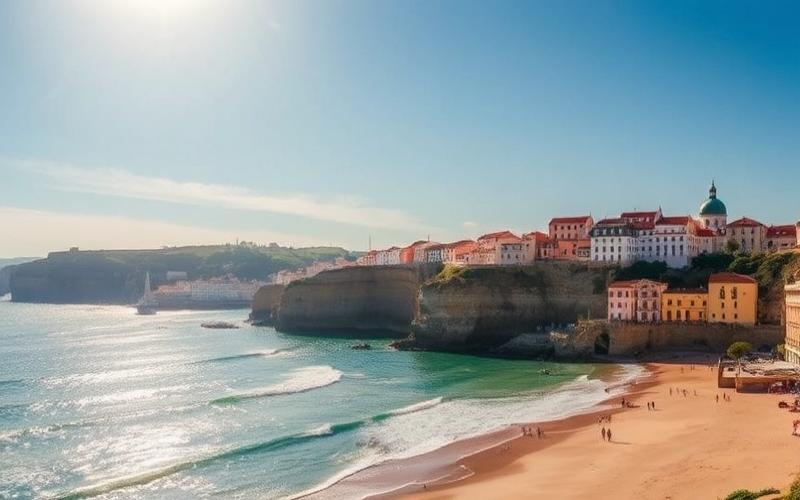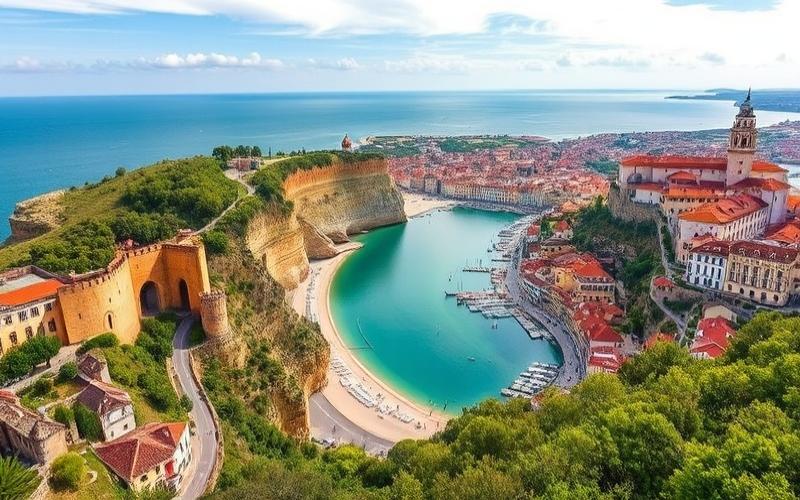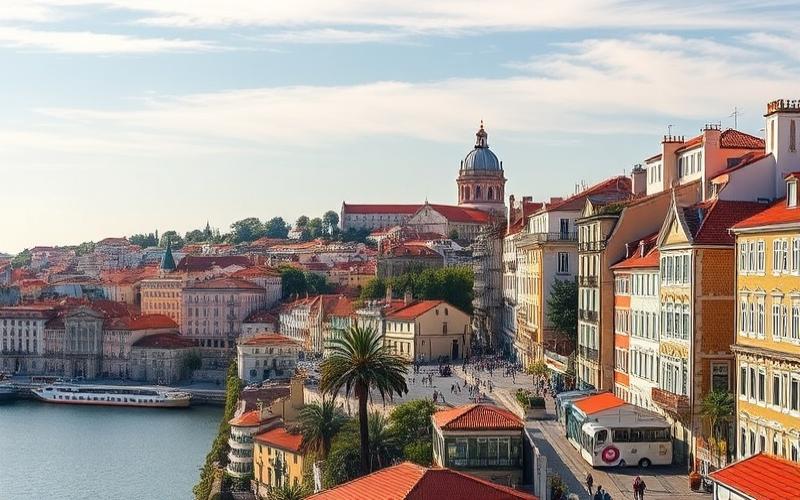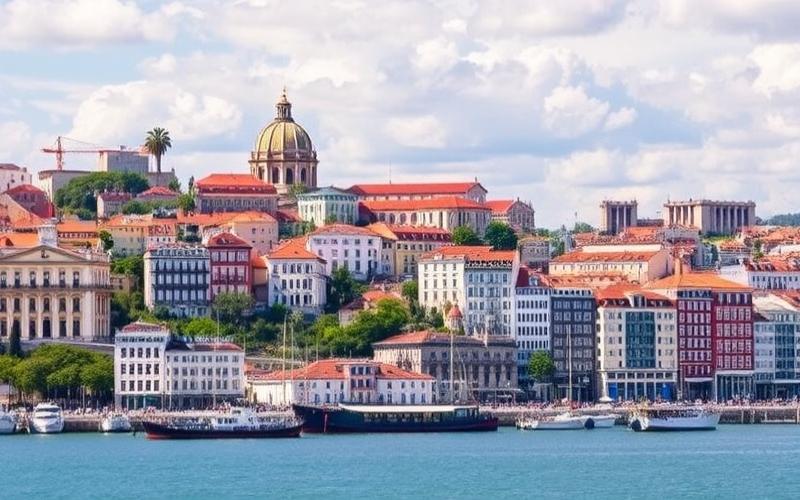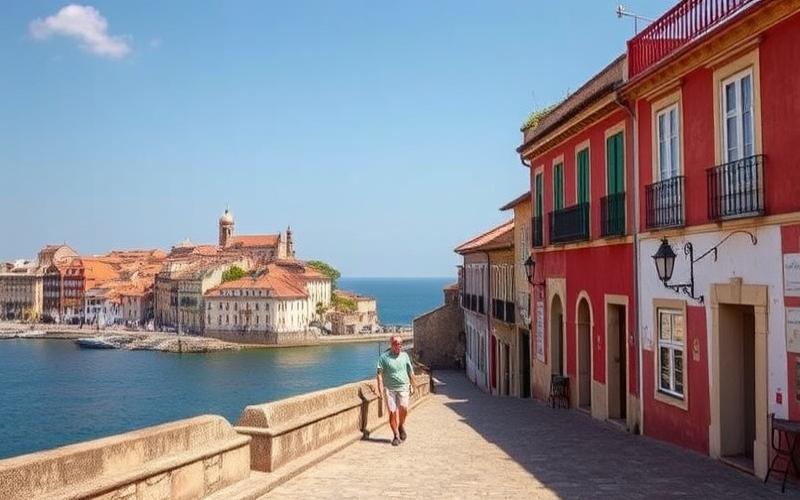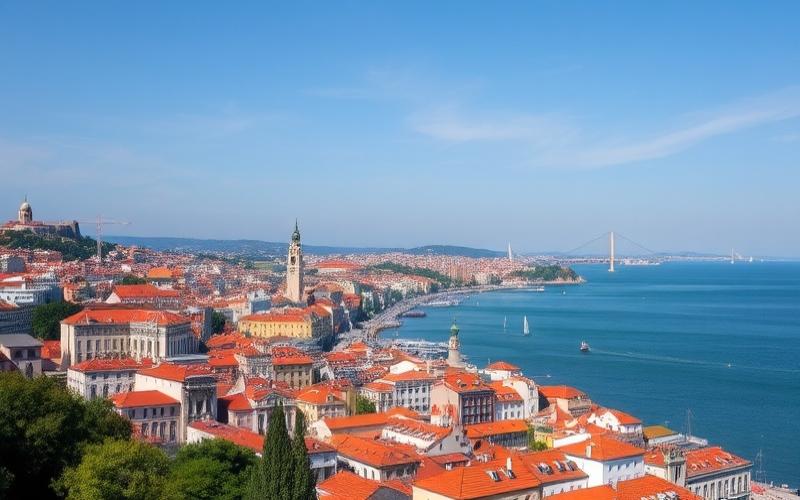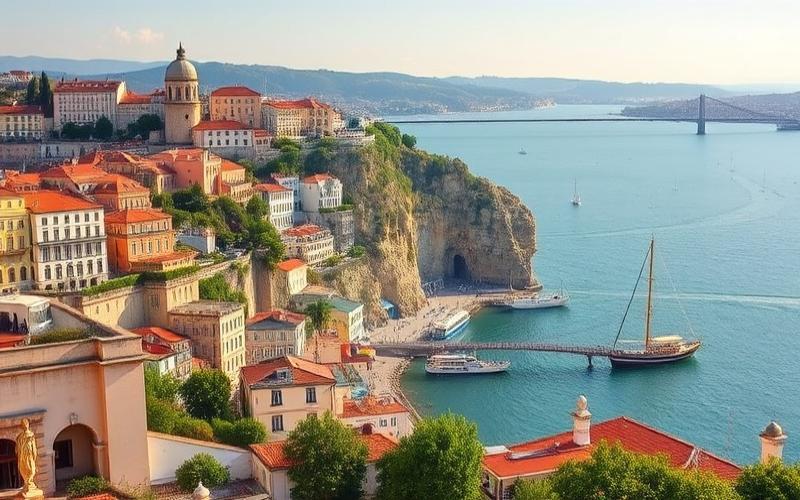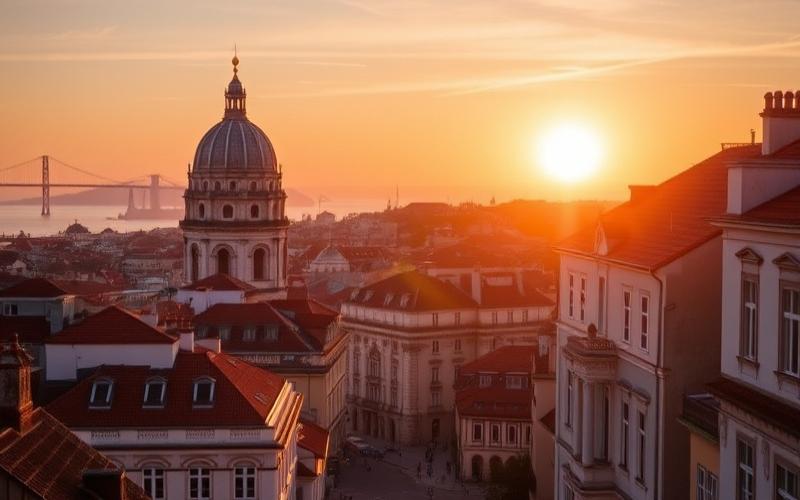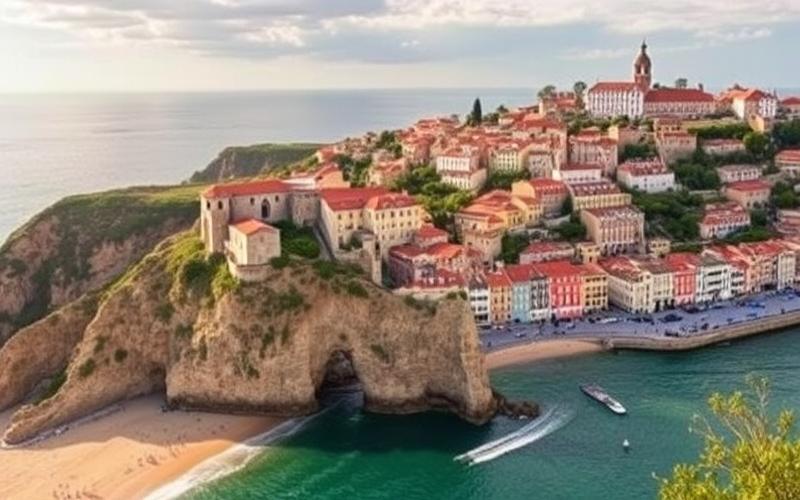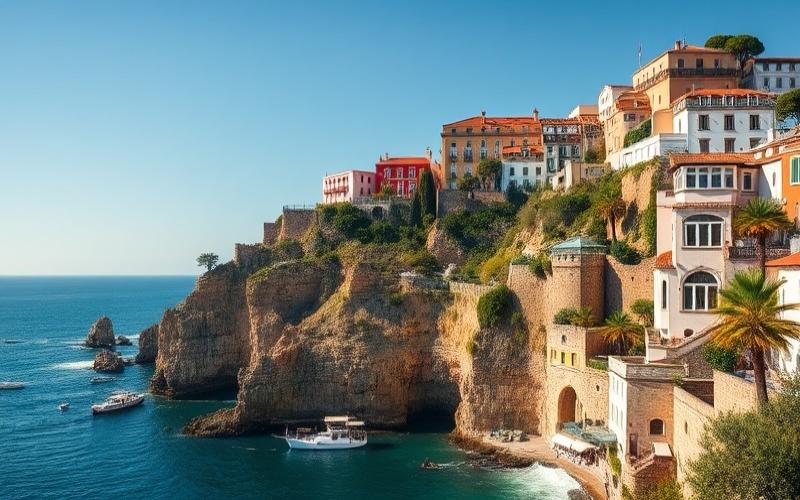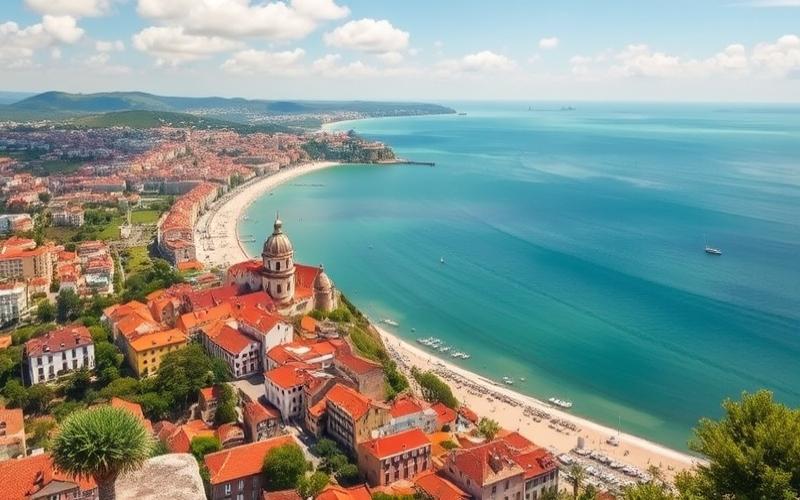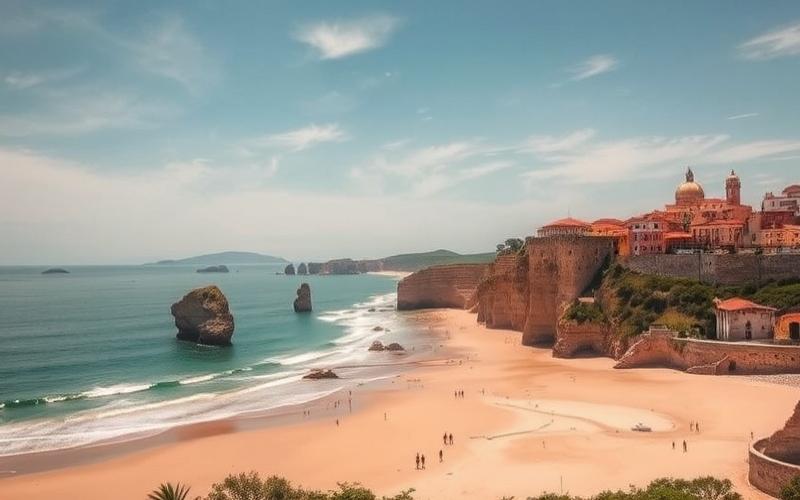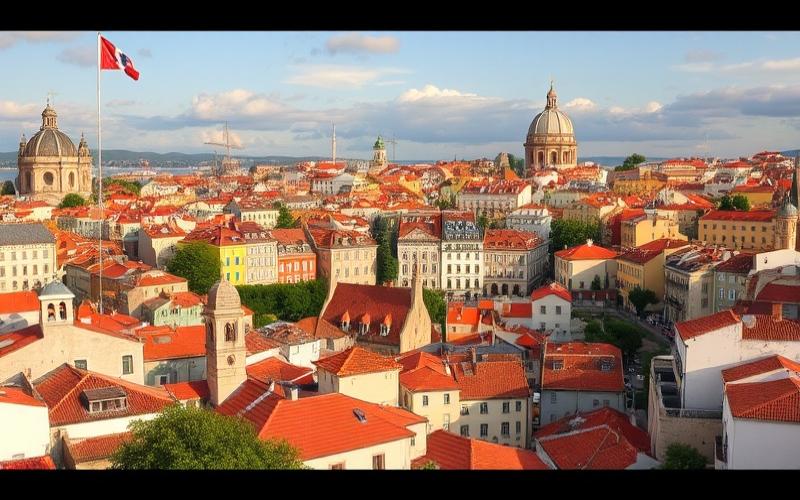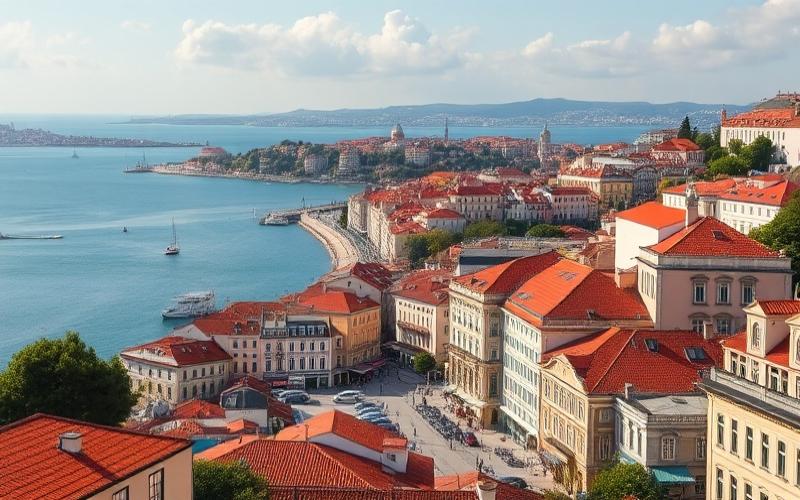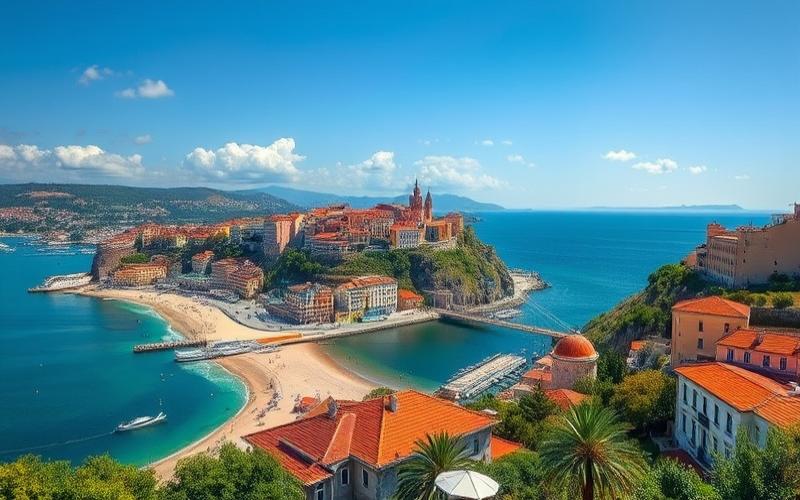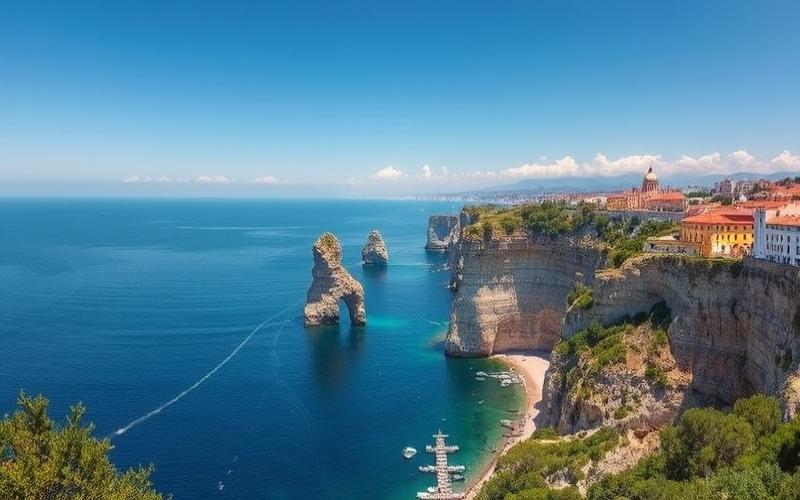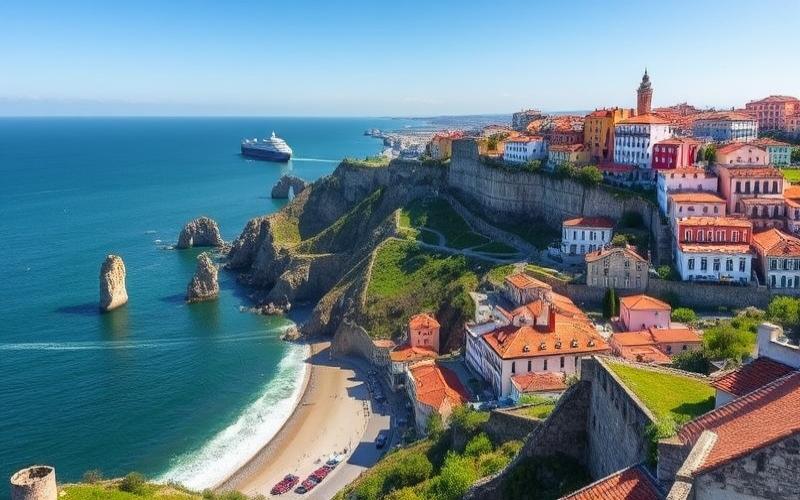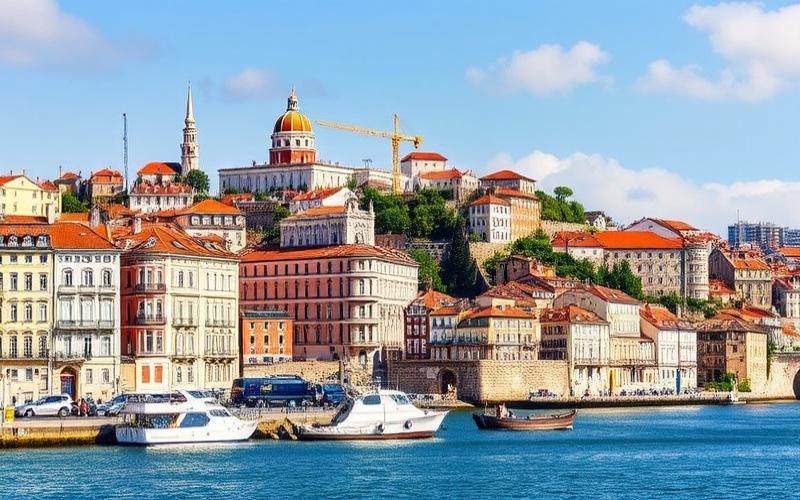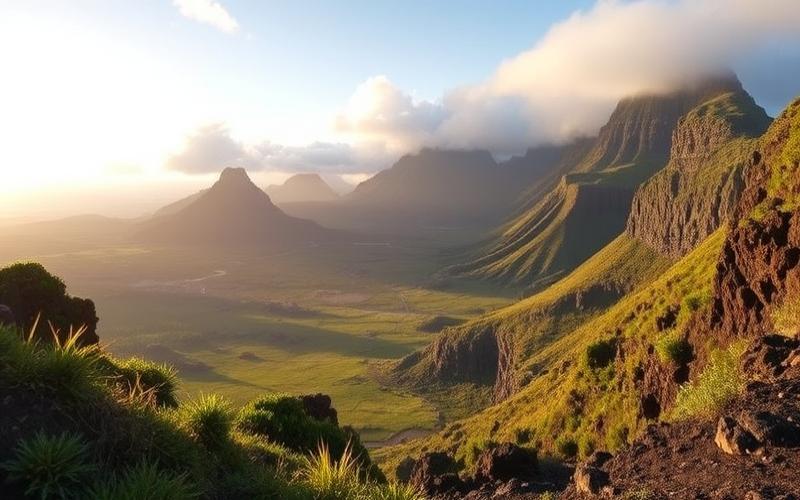
 Published on and written by Cyril Jarnias
Published on and written by Cyril Jarnias
Portugal, a country located at the southwesternmost tip of Europe, offers varied and fascinating geography. From its Atlantic coasts to its inland mountains, and including its paradise islands, Portugal is a multifaceted country that continues to captivate visitors from around the world.
Geographical Location
Mainland Portugal occupies a rectangular strip of land west of the Iberian Peninsula, bordered by the Atlantic Ocean along its entire western and southern front. It shares its land border only with Spain, spanning 1,214 km to the east and north.
The Portuguese territory extends over 92,090 km², of which 91,470 km² is land and 620 km² is territorial waters. It also includes two autonomous archipelagos in the Atlantic Ocean:
– The Azores, located about 1,500 km west of Lisbon – Madeira, located 1,000 km southwest of the Portuguese capital
This unique geographical configuration gives Portugal a significant maritime frontage, with over 1,800 km of coastline.
Good to know:
Thanks to its island territories, Portugal possesses one of the largest exclusive economic zones in Europe, covering nearly 1.7 million km² of ocean.
Topography and Landscapes
The topography of mainland Portugal is characterized by a marked contrast between the mountainous north and the gentler plains of the south:
The North
The northern region is dominated by mountain ranges, the main ones being:
– Serra da Estrela, the highest point in mainland Portugal at 1,993 meters altitude – Serra do Gerês – Serra do Marão
These mountains are interspersed with deep valleys, like that of the Douro, famous for its terraced vineyards.
The Center
The center of the country is characterized by gentler terrain, with hills and plateaus. Notable features include Serra da Lousã and Serra de Aire.
The South
The southern region is dominated by vast plains, particularly in Alentejo. The Algarve, meanwhile, offers a varied coastline alternating between steep cliffs and long sandy beaches.
Good to know:
Portugal’s climate varies from north to south, with more pronounced Atlantic influences in the north and a Mediterranean climate in the south, particularly in the Algarve.
Main Regions and Cities
Portugal is divided into 18 administrative districts on the mainland, in addition to the two autonomous island regions. Here is an overview of the country’s main regions and cities:
1. Lisbon Region
Lisbon, the capital and largest city of Portugal, is the country’s economic and cultural heart. With a population of nearly 550,000 inhabitants (2.8 million in its metropolitan area), it stretches along the banks of the Tagus River and offers a unique blend of history and modernity.
Other important cities in the region: – Sintra – Cascais – Setúbal
2. North
The country’s second city, Porto, is the jewel of northern Portugal. Famous for its wine and architectural heritage, it has approximately 240,000 inhabitants (1.7 million in its metropolitan area).
Other notable cities in the North: – Braga – Guimarães – Vila Nova de Gaia
3. Center
The central region is home to historic cities like Coimbra, famous for its centuries-old university, and Aveiro, nicknamed the “Portuguese Venice” for its canals.
4. Alentejo
This vast rural region south of the Tagus is known for its golden plains and fortified towns like Évora, a UNESCO World Heritage site.
5. Algarve
The southernmost region of mainland Portugal is renowned for its beaches and sunny climate. Faro, its capital, is a popular tourist destination.
6. Azores and Madeira
These autonomous archipelagos offer spectacular volcanic landscapes. Ponta Delgada (Azores) and Funchal (Madeira) are their main cities.
Good to know:
Despite its modest size, Portugal offers a great diversity of landscapes and experiences, from the mountainous north to the sunny beaches of the south, and including the volcanic islands of the Atlantic.
Hydrography
Portugal is traversed by several important rivers, most of which originate in Spain:
– The Tagus, the longest river in the Iberian Peninsula, which flows through Lisbon – The Douro, famous for its wine valley – The Guadiana, which forms part of the border with Spain – The Mondego, the longest river entirely within Portugal
These waterways have played a crucial role in the country’s history and economy, particularly for irrigation, hydroelectric power production, and transportation.
Climate
Portugal enjoys a temperate climate, influenced by the Atlantic Ocean and the Mediterranean Sea:
– The north experiences an oceanic climate, with mild, rainy winters and cool summers – The south enjoys a Mediterranean climate, characterized by hot, dry summers and mild winters – The Azores and Madeira archipelagos benefit from a subtropical climate, with mild temperatures year-round
This climatic diversity contributes to the richness of Portuguese biodiversity and the country’s tourist appeal throughout the year.
Good to know:
Portugal is one of the sunniest countries in Europe, with an average of 3,000 hours of sunshine per year in some southern regions.
Disclaimer: The information provided on this website is for informational purposes only and does not constitute financial, legal, or professional advice. We encourage you to consult qualified experts before making any investment, real estate, or expatriation decisions. Although we strive to maintain up-to-date and accurate information, we do not guarantee the completeness, accuracy, or timeliness of the proposed content. As investment and expatriation involve risks, we disclaim any liability for potential losses or damages arising from the use of this site. Your use of this site confirms your acceptance of these terms and your understanding of the associated risks.

